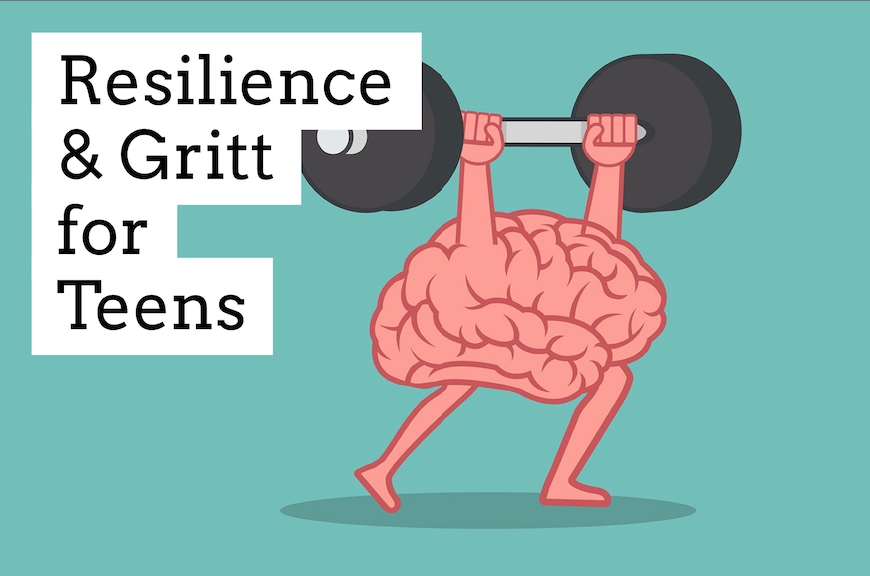How to Develop Resilience And Grit in Teenagers And Kids
Resilient Foundations
Resilience is built on 3 major connection point or "pillars"; School, Home and Sport/Work. With stronger connection comes better resilience or another definition; "The ability to get through hard times in a healthy way". In This Article we'll go through how to build the pillar's that reinforce the resilience in teens.
Connection is Key. Please see how to make friends for more info about how to make connection with others. One of the best books I read regarding This topic of resilience was the book Grit by Angela Duckworth. Ted Talk Here. Her book was a scientific study into what creates resilience.The two major takes away from her study and other national studies where; Connection & a Set Goal you work on everyday, no matter what. I think having goals needs to be talked about more.
Goals don't have to be so serious. They simply need to be linked into something that you want. Zig Ziglar (motivational speaker) used to say "Having a feeling the future will be better creates a lot of hope". Another favourite from him was; "A goal properly set is half way reached". Goals create an image of what you believe life could look like in the future. Goals create a feeling of being "in control" which is a key to resilience; focusing on what you have control over. Reminds me on the Serenity Prayer we had to learn in school.
However a goal without clear steps action towards that goal does help at all. Thats why I put the major steps into this free infographic to make it a little easier. Below is a full resolution poster easy to print out.
Most parents and caregivers these days try pretty hard to shield kids from mistakes and bad experiences. But we all know that’s an impossible task. Most, if not all teens will experience something traumatic at some point, whether it’s severe, like…
Witnessing or experiencing domestic abuse
Exposure to war, violence or natural disasters
Losing a parent
Or sadly, more common events like:
Divorce
Moving around a lot
Cyberbullying
Getting left alone a lot
Or just your typical, everyday childhood experiences, like
Not getting something you wanted
Breaking rules, getting in trouble
A friendship that didn’t work out
Doing poorly on a test
Losing a game or not getting picked for a school team
Remember what it was like being a teenage. Emotions are High and often New which can seem really scary. Wether it's bullying, loneliness or feeling stupid teenagers are going through a lot. To put it in prospective here is a comparison on Mental Pain according to Orbach & Mikulincer Mental Pain Scale (OMMP). Reference at end of article.
As a youth speaker, what I’ve learned by talking with the experts is, it doesn’t matter so much what happens. What matters is a kid’s ability to deal with it and bounce back from it. When kids can develop healthy relationships and healthy ways of being in the world in spite of making mistakes and encountering obstacles and life's anxieties, that’s called resilience.
The 2 myths of resilience
People often think that kids, in general, are tough; they can bounce back from anything. There is a myth out there that, because they don’t show their emotions the same way adults do, kids aren’t really as affected by adversity. You see pictures of kids playing in the dirt like nothing’s happening, while bombs are falling over the next hill.
But just because a kid doesn’t talk or get emotional about some of their experiences doesn’t mean there’s nothing wrong. And often we see this later as a lack of resilience: teens who give up and check out, who are too afraid of failing to even try. The second myth is that some kids are just born resilient. “Oh, Sally and Nick grew up in the same house and went through the same stuff but now Sally’s a nurse and Nick’s in prison. She must be more resilient.”
The truth is, resilience is not genetic. Resilience is made.
Ann S. Masten, PhD, a Professor at the University of Minnesota and renowned author of several books on resilience in development, coined the term ‘ordinary magic’ to describe the idea that resilience isn’t rare or special, but just the result of kids having more resources within themselves, their families and communities. If you want to help make students resilient, here’s what you can do.
12 ways to build resilient students:
Boost their self-esteem.
A kid’s attitude about herself is something we can build by noticing and complimenting not just natural abilities, but learned behaviors like determination, effort, and problem-solving.
Don’t shield kids from making mistakes.
How can teens learn to cope with everyday frustrations and challenges if they never experience any?
Lend perspective.
As an educator, you know that failing a test (for example) is a tiny blip in a teen’s life, not a disaster. Help the student overcome disappointment by making a plan for future success.
Teach self-control strategies.
You can do this before they experience something negative. Harvard University’s Center for the Developing Child has a great resource for educators to help teens deal with difficulties and become more resilient.
Emote.
Being cool-headed doesn’t mean we ignore our emotions; suppressing feelings can lead to a much bigger blowup (or give up) later. Instead, be a safe person for kids to talk to about their frustrations. When kids feel heard, not judged, you can teach them to turn it around.
Connect.
One or two quality relationships in a kid’s life are all that’s required to create a feeling of connection to the world at large; you can be that model for a child or create a peer mentoring situation where you pair kids together. This builds social skills and encourages kids to ask for help.
Take a positive approach.
Remind kids of their strengths and show them how to put the focus there, not on the negative. What we think about, expands!
Offer choices.
When kids have some choice over how they’re going to do an assignment or what subject matter to pursue, they often push through obstacles because they’re invested in the results. Kids can’t learn to make good choices if they have no choices.
Broaden horizons.
Don’t assume kids are getting exposed to positive role models outside of school; their whole worldview could be formed by nothing more than social media. Introduce teens to books and films about historical or fictional figures whose resilience won the day.
Set realistic goals.
Goals should be broken down into smaller steps that require consistent progress, which shows students how sticking with something pays off.
Encourage kids to get in touch with their spiritual side.
People with spiritual practices – whether it’s yoga, meditation, some form of worship, or what have you – tend to be more compassionate and resilient than those who are totally disconnected from their spiritual side.
Be accepting.
Not every student is going to have an outwardly can-do attitude, but resilience isn’t about that; it’s about being able to respond to situations in healthy ways.
Remember to teach them it is okay not to be okay. Bad times will pass. Our emotions are not set but ever changing. They have gone through hard times before and they will do it again. There are simple, fun ways to relieve stress as well. Sometimes the best advice I could give was the simple advice a fish gave me; 'Just Keep Swimming'.
Sources:
Teacher Resource: PERMA+
Was this article helpful? Do you have any tips or points you think would be added? Dont be silent! I'm a really person typing away as your a real person reading this sentence (thank you by the way). Let me know how I can improve & long term you'll help the next reader & help me when speaking to students. Thank you in advance! :) - Jonny Shannon



